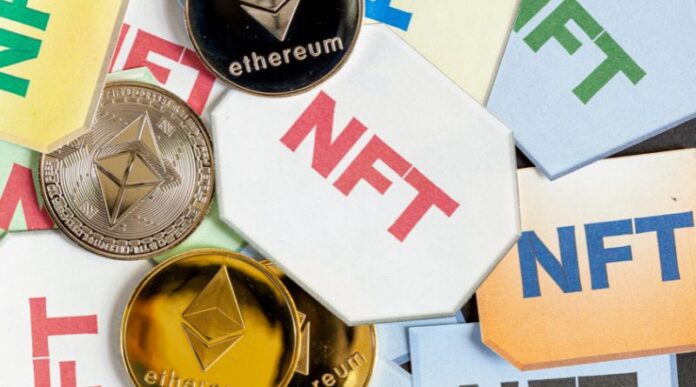Key Takeaways
- An in-depth look at the transformative power of NFTs and their role in various creative sectors.
- Detailed insights on how NFTs offer newfound control and monetization strategies for artists and creators.
- An exploration of NFTs’ sustainable practices and future outlook in the digital economy.
Introduction to Non-Fungible Tokens (NFTs)
In today’s increasingly digitalized world, the term ‘NFT’ has become a buzzword, signifying more than just a trend but heralding the dawn of a new era in how we perceive digital ownership and artistic value. Non-fungible tokens, or NFTs, are unique cryptographic tokens that exist on a blockchain and cannot be replicated or exchanged on a one-to-one basis. This makes them ideal for representing ownership of unique digital items, such as artworks, collectibles, or content in online domains. Unlike cryptocurrencies like Bitcoin, which are identical and thus can be traded or exchanged with one another, NFTs are distinguished by singular traits that make them one-of-a-kind.
The Evolution of Art and NFTs
With the rise of digital art and collectibles, NFT airdrops have become a novel way for creators to engage and expand their audience by giving away free tokens representing some value. Perhaps one of the most compelling aspects of NFTs is their ability to democratize art and content, granting access and ownership to a broader, more global audience than ever before. From first-time digital art buyers to seasoned collectors, the market for NFTs has exploded, prompting an essential discussion about how they can redefine the value and distribution of art.
Over Time, art has changed to reflect societal and financial shifts. In this progression, NFTs are a digital revolution that gives artists a new way to share and make money from their work. They establish a permanent ownership record and foster direct communication between artists and consumers. This puts established gatekeepers of the art market to the test, democratizing the sector and opening up new revenue streams. Artists circumvent traditional distribution channels by utilizing blockchain technology, which raises questions about the worth of digital work and its historical importance. This is a reflection of broader societal tendencies toward decentralization and digitalization, which affect a variety of industries outside of the arts.
NFTs in the Music Industry
Within the music sphere, NFTs are revolutionizing how we collect and interact with music and rewriting the rulebook for artist remuneration. They provide an alternative to the traditional music industry model, wherein artists often give up a significant share of their earnings to record labels and streaming platforms. By tokenizing albums, singles, or exclusive experiences, musicians can connect with fans on a more personal level, leading to a more substantial fan base that is not only emotional but potentially financial in the success of their favorite artists. This direct-to-fan approach, made possible by NFTs, promises a new landscape for music creation, distribution, and consumption. For up-and-coming artists, NFTs mean a new path to exposure and artistic independence. They offer a way to bypass industry gatekeepers and engage directly with audiences worldwide, providing monetary benefits and creative control.
The Role of NFTs in the Gaming Universe
NFTs have also found a compelling use case within the gaming industry, altering the fundamental nature of in-game assets. Traditional gaming economies often held value within their closed ecosystems. Still, NFTs enable players to take actual ownership of in-game items, allowing these to be traded or sold on external marketplaces. This paradigm shift enhances the gaming experience and proposes an economic model where Time and effort invested into gaming can potentially yield real-world financial returns. Games built on blockchain technology foster a participative and vested gaming community where players are stakeholders, not just consumers. The permanence and security provided by blockchain networks mean that the ownership and rarity of in-game items are verifiable and protected from duplication, further boosting their value and appeal to players.
Intellectual Property and NFTs
The intricate web of digital content creation, distribution, and ownership demands a robust mechanism for protecting intellectual property rights. NFTs can provide such a mechanism. By leveraging the immutable ledger of a blockchain, creators can ensure that the provenance of their work is indisputable. The implications for copyright protection are significant; blockchain is an eyewitness to originality, deterring unauthorized use and reproduction of copyrighted material. As the industry evolves, these tokens may prove integral in the fight to protect digital content from ubiquitous online theft and piracy. Artists, photographers, and writers find NFTs as a means to retain control over their work, dictating terms under which it is shared and sold while also creating revenue opportunities every Time the NFT changes hands owing to ‘smart contract’ technology.
The Potential Impact of NFTs on Film and Entertainment
The confluence of NFTs with film and broader entertainment signifies a dramatic shift in how content may be distributed and consumed. Beyond just ownership, NFTs provide creators with innovative methods to blend storytelling with interactive and immersive experiences. A new vista opens—enabling audiences to own parts of the content they love, whether it be a scene from a movie, an exclusive clip from a web series, or digital memorabilia associated with their favorite entertainment properties. The recent rise of NFTs in the entertainment industry is just beginning to unfold, with the potential to redefine the relationship between creators, content, and audiences. They pave the way for more intimate and collaborative interactions, creating communities around content and providing fans with a stake in their beloved narratives.
Market Trends and the Future of NFTs
NFTs have rapidly ascended from obscurity to a powerful economic force, capturing the imagination of investors, creators, and technophiles. They are now a pivotal topic in the broader discourse around the digital economy, with industry leaders and visionaries waxing lyrical about their potential. The recent surge in NFT sales has shown that a tangible value is ascribed to these digital assets, with the trend only escalating over Time. The digital renaissance is well underway, and as blockchain technologies evolve, the scalability and accessibility of NFTs are likely to increase, cementing their place in modern digital commerce. Experts predict that as trust and understanding of NFTs grow, so will their applications across industries, challenging conventional business models and enabling new forms of interaction and transaction.
Challenges and Controversies Surrounding NFTs
As with any emergent technology, NFTs have invited their fair share of skepticism and criticism. At the intersection of high finance, tech, and popular culture, complicated questions arise about digital assets’ authenticity, valuation, and speculative nature. NFTs are not immune to the cycles of boom and bust that characterize speculative markets. High-profile sales have led some critics to caution against viewing NFTs as surefire investments and regulatory frameworks continue to grapple with this new asset class. The swift rise and substantial media coverage of NFTs may give the impression of an assured upward trajectory. However, the truth is far more nuanced, with the market exhibiting volatility and unpredictability characteristic of any developing domain.
The Global Perspective on NFTs
While some regions have quickly caught the NFT wave, a spectrum of adoption worldwide must be improved in certain localities due to a lack of infrastructure, regulatory clarity, or technological literacy. Opening dialogue and fostering understanding about the potential of NFTs is essential for global uptake. As the technology matures, standardization and best practices are anticipated to ease the integration of NFTs into different markets and cultures, promoting a more equitable and extensive digital economy. For the foreseeable future, we expect various industries to continue probing the potential of NFTs, with the ebb and flow of adoption rates reflecting the diversity and complexity of global markets.
Conclusion: Embracing the NFT Revolution
At the vanguard of digital culture, NFTs are redefining ownership, value, and the boundaries between technology and culture. NFTs upend long-held beliefs and spark a never-before-seen global renaissance for the creative industries, impacting everyone from independent filmmakers to major entertainment companies. Their effects are seen at every stage of the creation and dissemination of material. NFTs should not be viewed as just another fad but rather as an integral component of human expression and entrepreneurship that will determine the course of society going forward. Society should approach it cautiously and with hope despite being a new reality.

